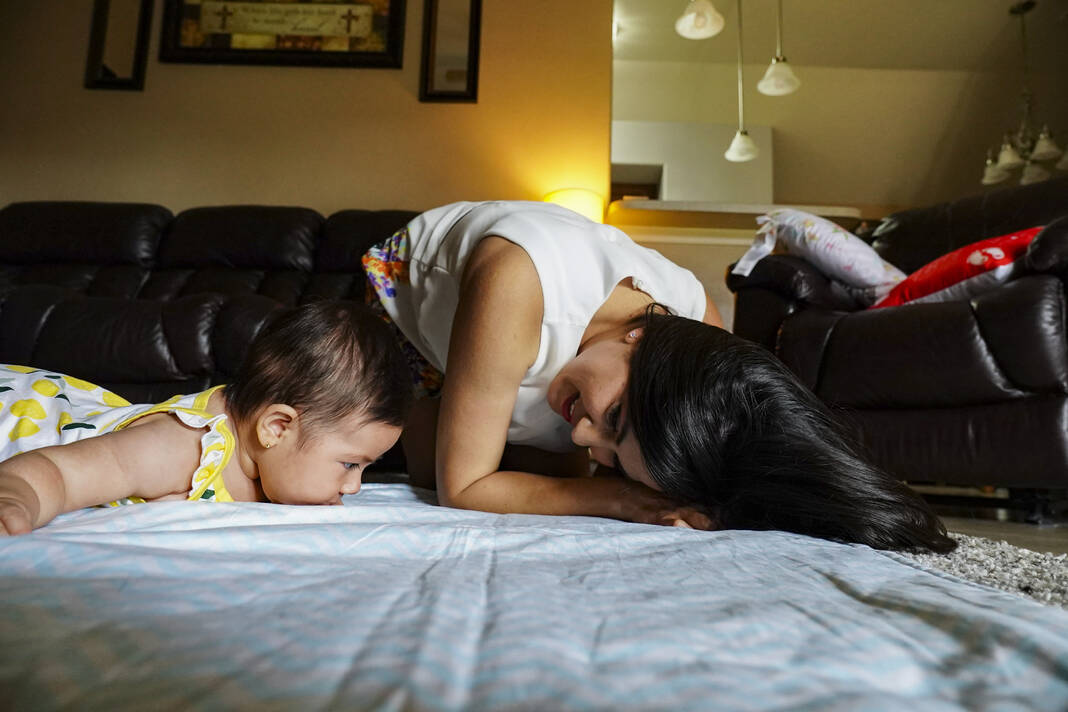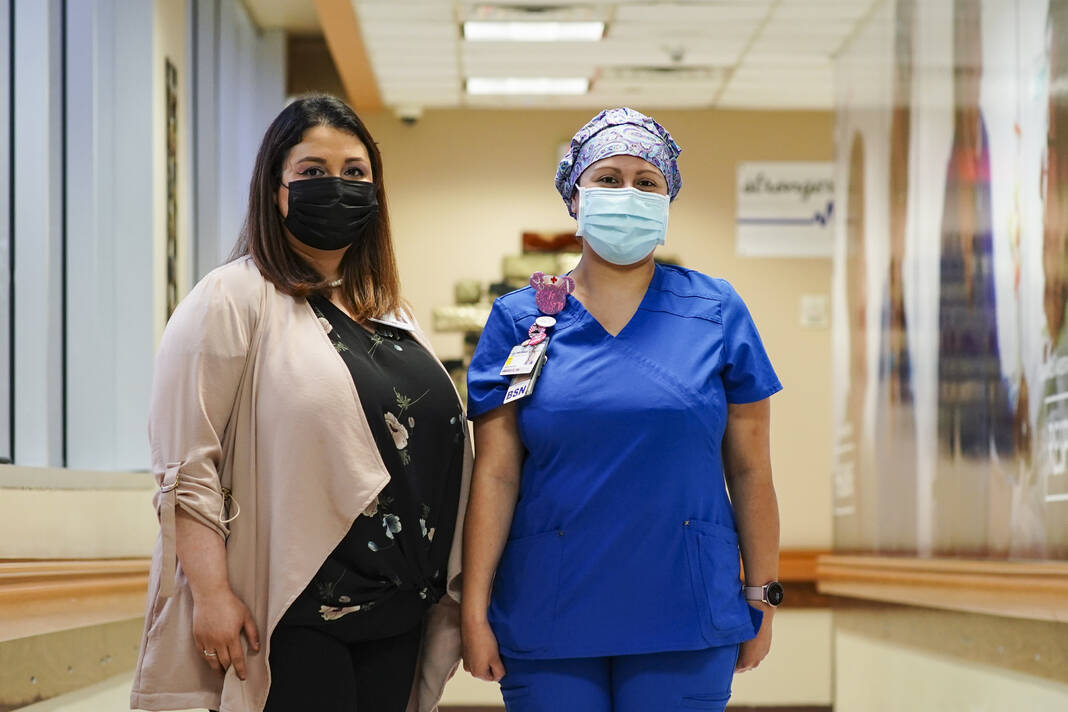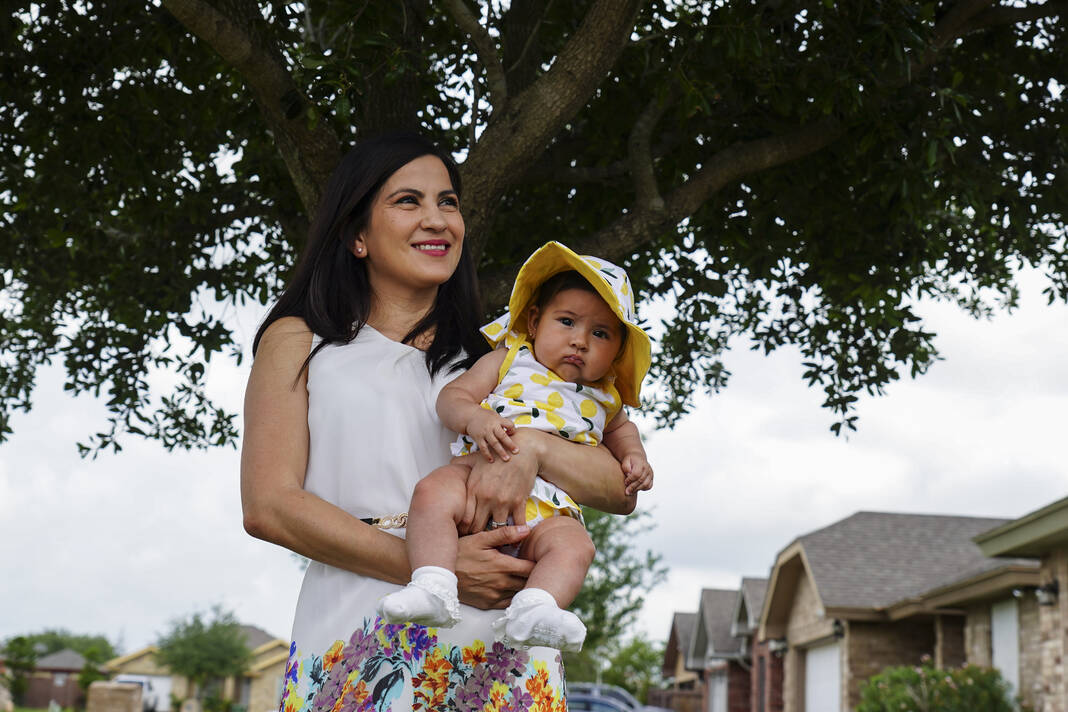|
Only have a minute? Listen instead
Getting your Trinity Audio player ready...
|
This Mother’s Day, several new mothers in the Rio Grande Valley are not just celebrating their babies but that together, mother and child gave the gift of saving a life.
Since August 2021, Valley Baptist Medical Center-Brownsville has been part of a unique program with the Texas Donor Network to provide living tissue donations.
Texas Donor Network is an FDA-registered organization based in the Rio Grande Valley that partners with local hospitals to provide donated tissues for research, therapy, transplantation and education.
While the first thing that comes to your mind when you think of ‘tissue donation’ might be organs like kidneys or lungs, there is a wide range of human tissues needed to help people.
So this is where mom and baby come in.
After months of providing shelter, nutrients and developing a healthy immune system, one essential tool of growing a tiny human has served its purpose — the placenta.
The placenta is an organ that forms during pregnancy around the fetus and is attached to the uterus wall. A baby connects to the placenta through an umbilical cord, which is how it gets what it needs until birth.
After that, the placenta usually ends up in the trash, but now the placenta has the chance to help others.
According to Mason A. Covio, director of business development for the Texas Donor Network, the placenta contains a complex matrix of growth factors. Growth factors mean it has the power to regenerate the epithelial cells that form epithelial tissue that lines your body inside and out, from your skin to your small intestine.
The amniotic membrane, which forms on the inside of the placenta, can be used to make grafts that can speed the healing of traumatic wounds that otherwise might be difficult to heal or prone to infection.
“Especially here in the Valley where there are large numbers of diabetic patients with diabetic wounds, this graft allows them to regenerate those wounds at a better rate than they would with other procedures,” Covio said.

When Texas Donor Network first approached the hospital with the program, the idea was a surprise.
“Initially, when they brought it up, I had never heard of it before, which is odd because it is being done pretty much across the nation,” Miriam Longoria, director of women’s services at Valley Baptist Health System Brownsville, said.
While the hospital began working with Texas Donor Network in August 2021, the program started in December.
Due to the project’s infancy for the Texas Donor Network, they had to obtain 13 placentas in August for their San Antonio-based partner, who makes the grafts to audit their collection process before launching the official program.
After several months, the partnership is something that Longoria says offers a well-deserved opportunity to brag about the unique experience their expecting mothers can have in the lower Rio Grande Valley.
“Now that the baby is born, it no longer needs that placenta, so it is a gift the baby can give to somebody else,” she said.
To the 36-year-old mother of two, Ana Sierra, who delivered her daughter Keira by caesarian section on Dec. 15, it was a welcome surprise that she could donate her placenta.
Before being approached the morning of her delivery, she had no idea what she would do with her placenta, so it made sense to donate it.
Now laying on a play mat shaking a toy for the nearly 5-month-old Keira in their Brownsville home, she loves that her daughter was able to help someone else just by being born.
“It makes me feel that my daughter’s life came with a beautiful purpose by donating her placenta,” she said.
However, for expectant mothers looking to get involved, there are requirements and automatic exclusions for who can donate to the program.
Currently, placentas accepted for donation can only be those delivered by C-section. The main reason for this requirement is twofold.

Firstly, it allows the mother, who may not have heard of the new program beforehand, time to learn about and make an informed decision when they speak to Texas Donor Network’s Birth Tissue Specialist Gabriel Arguelles ahead of their operation.
“It is a lot easier to approach a mom who is not in pain or hurting and say, ‘hey would you consider donating your placenta?’ as opposed to you are contracting every 2-3 minutes and are at a pain scale of 8 out of 10 — you don’t really want to talk to Gabriel then about donating,” Longoria said.
The second reason is because of what the donation is treating. Since the grafts treat areas with trauma, introductions of unwanted and infectious bacteria and pathogens can cause additional harm.
Like the rest of the body, the vaginal canal is human tissue, which means there will always be bacteria and pathogens.
While a baby already has some way to fight any pathogens it picks up during delivery, the placenta does not.
“The placenta, which is not a living organism, is now outside the body and can no longer fight infection. So once contaminated with bacteria, there is no way to stop that,” Covio said.
Soon, Texas Donor Network is working with another partner to allow people to donate placentas delivered through the birth canal, but for the moment, it is C-section only.
To be a donor, Texas Donor Network also requires that mothers be under 45 years old, with children delivered at full term, no placenta issues, no COVID-19 exposure in the last 28 days, a blood test and a 48-question screening about their medical and travel history.
Once they get the green light, tissue specialists like Gabriel Arguelles step in.
Once the baby is out and the physician has a chance to make sure they do not need the placenta for further testing, the clock starts for Arguelles.
Even on ice, the placenta is only viable for 72 hours, so it needs to get to their partner in San Antonio as quickly as possible.
Arguelles, will take the placenta and perform a culture swab to be checked for infectious diseases or suspicious bacterial growth.
Then he rinses the placenta with a saline solution to clean it and inspects it for anything that would make it unusable. One of the stranger disqualifiers is if the baby happened to poop before or during the delivery.
While it might sound trivial, the poop (known as meconium) permanently stains the placenta and introduces unwanted bacteria. To be safe for use, they need to have as little bacteria outside the normal — so these placentas generally can’t be donated.
Once inspected and deemed ready, Arguelles triple bags the placenta and culture swab in a sterile bag with the saline solution, labels it and puts it in a cooler to go out.
When the placenta reaches San Antonio, the processing facility separates out the amniotic membrane to make grafts.
Each graft has a shelf life of six months to a year after the initial donation.
According to Texas Donor Network, most of these donations will stay in Texas.
However, some will be used outside the state for patients elsewhere in the country and a fraction internationally.
Currently, Texas Donor Network limits donations to 20 a month at the hospital, which Longoria says they can fill by the end of the first two weeks of every month.
Texas Donor Network has capped the program partially because it is new.
The company says they wanted to be sure as the program was starting, they could maintain the oversight needed without overwhelming their staff.
Their partner in San Antonio also handles processing for other companies, so they need to stay within their set limit for what they can accommodate.
However, Texas Donor Network is planning on expanding its donation capacity in July of this year to 60 donations per month.
With this expansion, the company wants to begin more outreach efforts with local physicians and open additional information resources for prospective placenta donors on their website. This way, mothers have more opportunities to learn about their option to donate before going to the hospital to deliver.
Valley Baptist Medical Center-Brownsville is also looking for a way to recognize the gift that mother and child have given their community for future donations at their facility.
“We’re really pushing, from a hospital standpoint, to get these moms and babies recognized as organ donors. Placenta donation is something that is so simple, but what it does is so amazing,” Longoria said.
For more information, visit texasdonornetwork.org.
To see more, view Brownsville Herald photojournalist Denise Cathey’s photo gallery below. WARNING: The photo gallery contains graphic medical photos:





